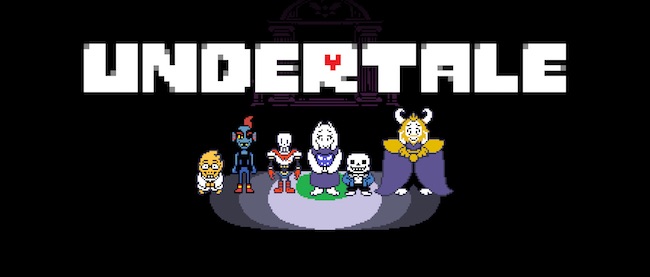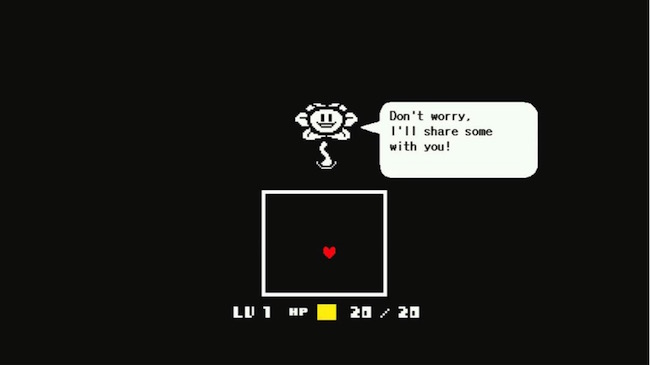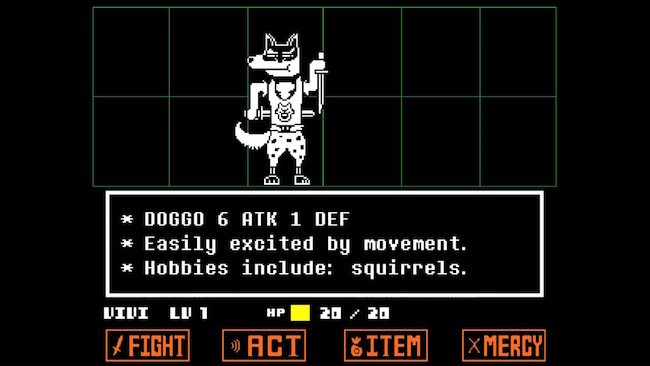
Undertale: just another GameMaker-crafted story with basic graphics and an amusing plotline, right?
Well… not quite.
Undertale was largely developed and produced by Toby Fox, and was released in September 2015. It has already sold over 800,000 copies through Steam and was nominated for multiple awards at The Game Awards 2015.
Undertale is funny. The writing is good. It’ll remind you of EarthBound. It’s sad at the end. Constantly having to press the button to move the dialogue forward gets really tedious. The jokes are drawn out for way too long. There’s a lot of hype surrounding it.
All of the above statements describe Undertale; a notoriously difficult thing to do without completely spoiling it. Even the earliest decisions you make impact the game and your experience hugely. I can’t promise this review will be 100% spoiler free, but I’ll try to describe what this game is all about without ruining it. It is best to go in with as few expectations as possible, though, and you can try the demo for yourself here.

Undertale starts just like any traditional RPG. You name your character before waking up within the game world. In this case, you’re in the middle of a bed of yellow flowers. And like other older titles, the graphics are simple, but convey what they need to.
As you’d expect, the first interaction you have is the tutorial for battle encounters. This is conducted by a sentient flower, who explains that combat will give you “EXP” and “LV”, before sending some mysterious white objects your way. At this point you may do as he suggests and move your ‘soul’ to touch the “friendliness pellets”, or you might decide this looks suspiciously like bullet hell and avoid them.

Either way, things take a turn for the worse, but luckily you’re saved by the guardian of the ruins, Toriel. I never knew what having a helicopter mum was like, but thanks to this game I definitely do now. She quite literally walks you through some of the traps and puzzles to explain the underworld to you, and encourages you to be merciful to your enemies rather than killing them left and right.
This opening is not only your introduction to the control scheme and tone of the game, but also to the plot. It, at first, seems fairly simple and run-of-the-mill, but it may not end up being quite what you’re expecting.

The way this game plays with mechanics and convention is riveting. This game is all about choice, and it’s about time someone figured out how to make those choices really matter on a personal level, for so many players. And while the main story only takes around five hours to get through, the surprises continue with every play through as you try different options.
With excellent presentation and an amazing soundtrack, there were few faults to be found in Undertale’s execution. The main one involves the tedious task of mashing the “speed up text” and “next” keys when running through dialogue. The writing is fantastic, but it can be a bit of a chore to get through the numerous boxes in every scene. Another is the odd layout of the dialogue choices. It’s unintuitive to the new player, and looks unattractive even once you’re used to it. I would say these negatives detract very little from the game overall, and may even have been done on purpose, given the amount of plot that’s revealed if you get fed up and stop trying to spare the monsters.

A lot of people really love Undertale, but there are those who aren’t big fans of it. The game really does make you think, and the message about “determination” really struck a chord in me. However, the game isn’t always nice to the player, especially when their moral views are different to what the story expects. Don’t let the hype inflate your expectations, but at the same time, know that this game deserves the attention it’s getting. Undertale is appropriate for all ages, but is probably best enjoyed by those who have a fair number of retro RPGs under their belt and are (or have been) a part of “Otaku” culture. Undertale really did affect me deeply and made me think.











